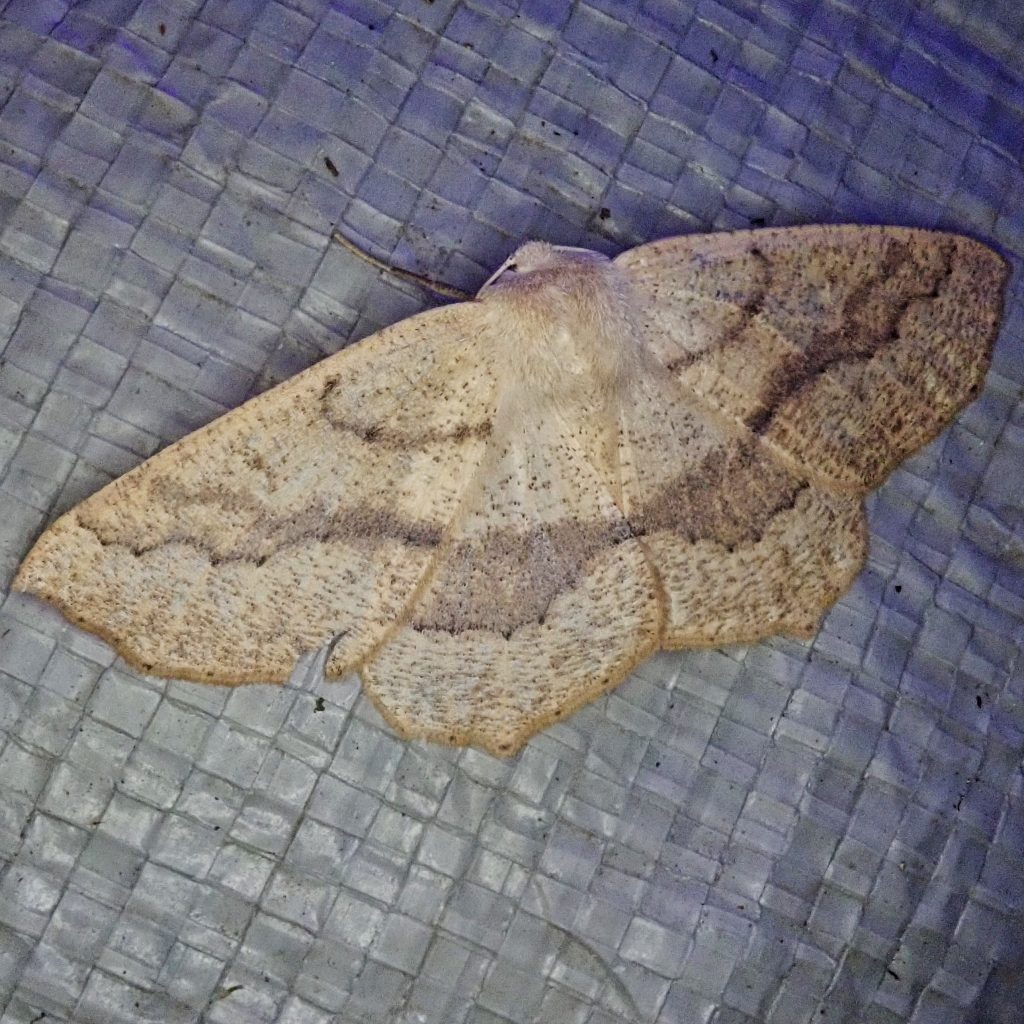
These members of the family Geometridae earned their occasional common name of omnivorous looper because they feed from the foliage of at least 27 different families of deciduous trees, shrubs, and plants. Unfortunately that includes many agricultural crops, including walnuts, avocados, and citrus, but in our region they don’t appear to be a pest species.
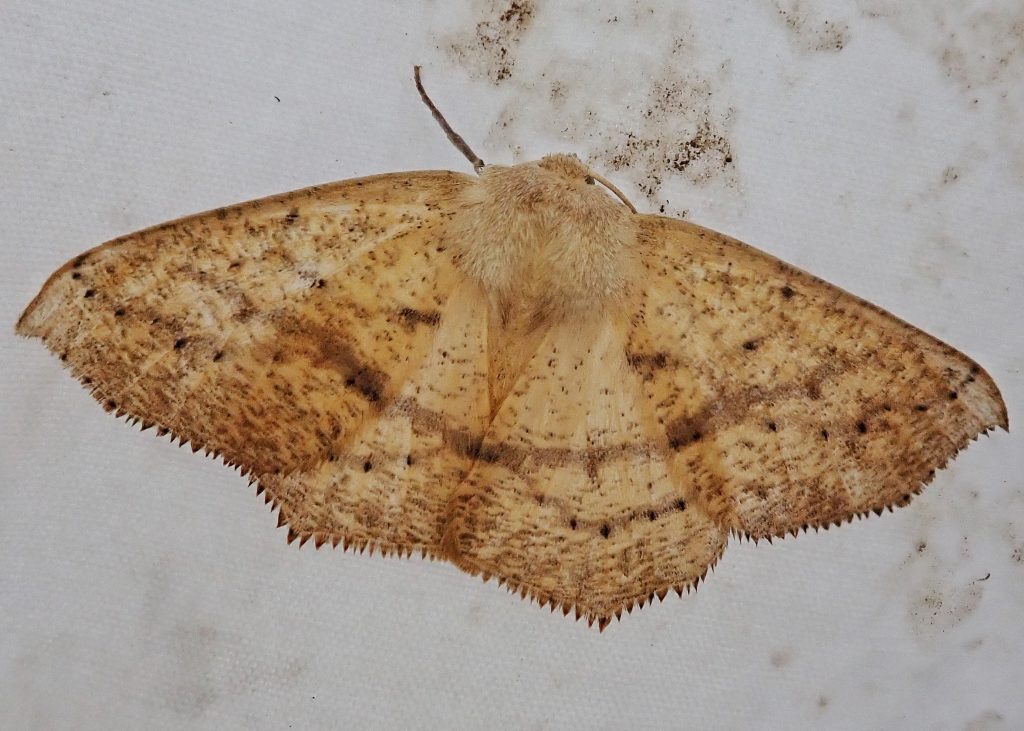
One of the things that endeared them to me was that one of their primary larval hosts in urban and suburban areas is English ivy. Ivy may look pretty in a garden or covering a block wall, but it is a persistent, pernicious, highly destructive menace in any kind of natural setting, and any enemy of English ivy is a friend of mine. For this reason I was devoted to learning to identify them in the field, so I didn’t risk injuring them by collecting them and taking them home, or in any way interrupt them doing their vital work.
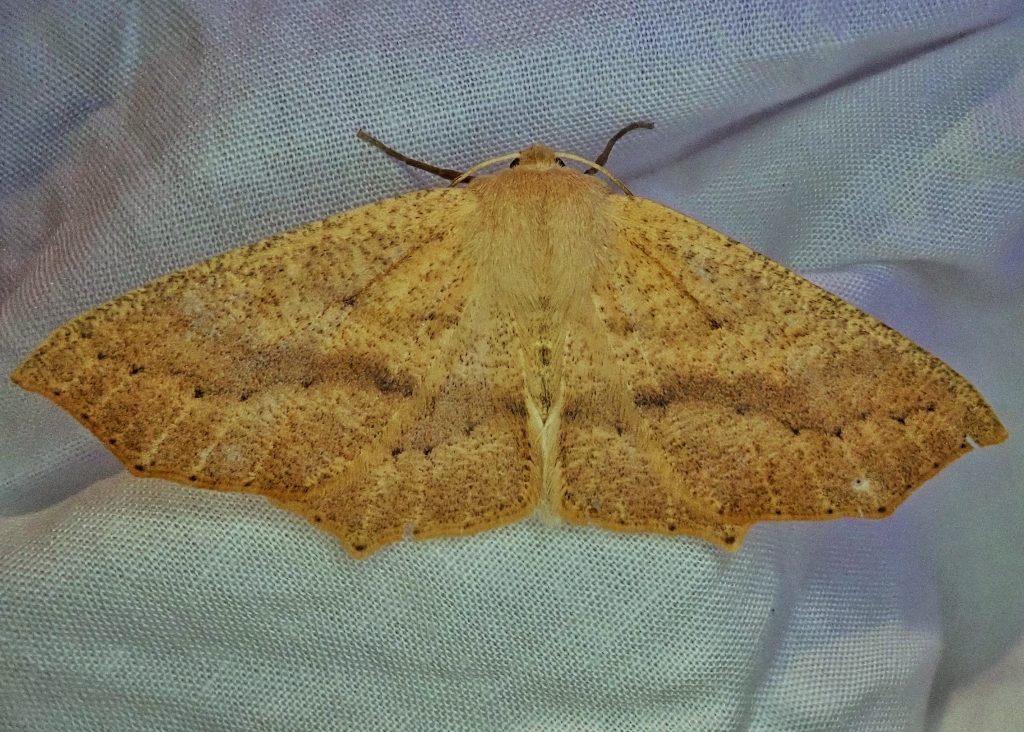
When I first started mothing, Sabulodes aegrotata were very confusing. Powell and Opler (‘Moths of Western North America’, 2009) say that “As for color and pattern, this is one of our most variable western moths.” And this was problematic because they turned out to be a very common visitor to my lights. The thing I learned to look for when encountering yet another variation of this moth was whether the medial and postmedial lines meet near the trailing edge of both fore- and hindwings. Coupled with the hooked forewing tips, and the rounded to pointed forewing margin and pointed hindwing margin, the joining of medial and postmedial lines allowed me to identify even faintly marked or dark specimens.
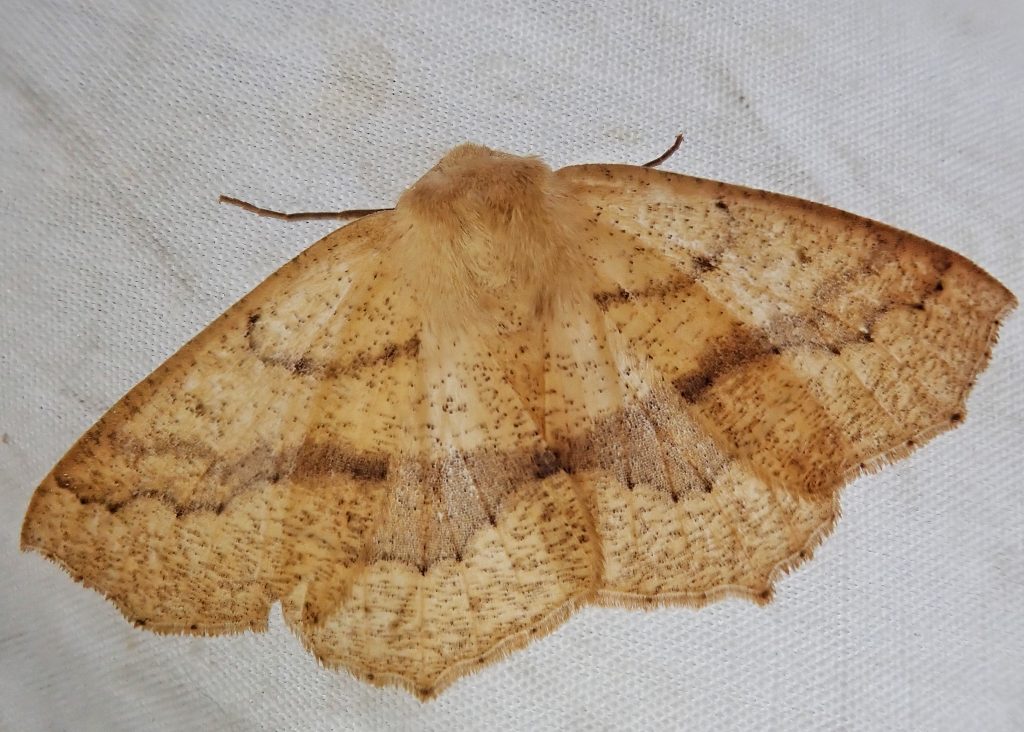
Description– Medium sized (fw length 17-26mm), grey to cream,ochre, tan, brown, or brownish black moth; many are unpatterned, with only faint transverse lines, but often they have a pinkish mauve patch between the medial and postmedial lines; may also have bold transverse lines; antemedial line, if present, will be curved; postmedial line is sometimes only spots at the veins, but if it is solid it is jagged, and joins the medial line somewhat before the trailing edge; hindwing is usually the same color as the forewing, the medial lines match, and the postmedial line joins the medial line at the trailing edge; forewing tips are slightly hooked and rounded to pointed on the margin, and the hindwing is pointed on the margin.
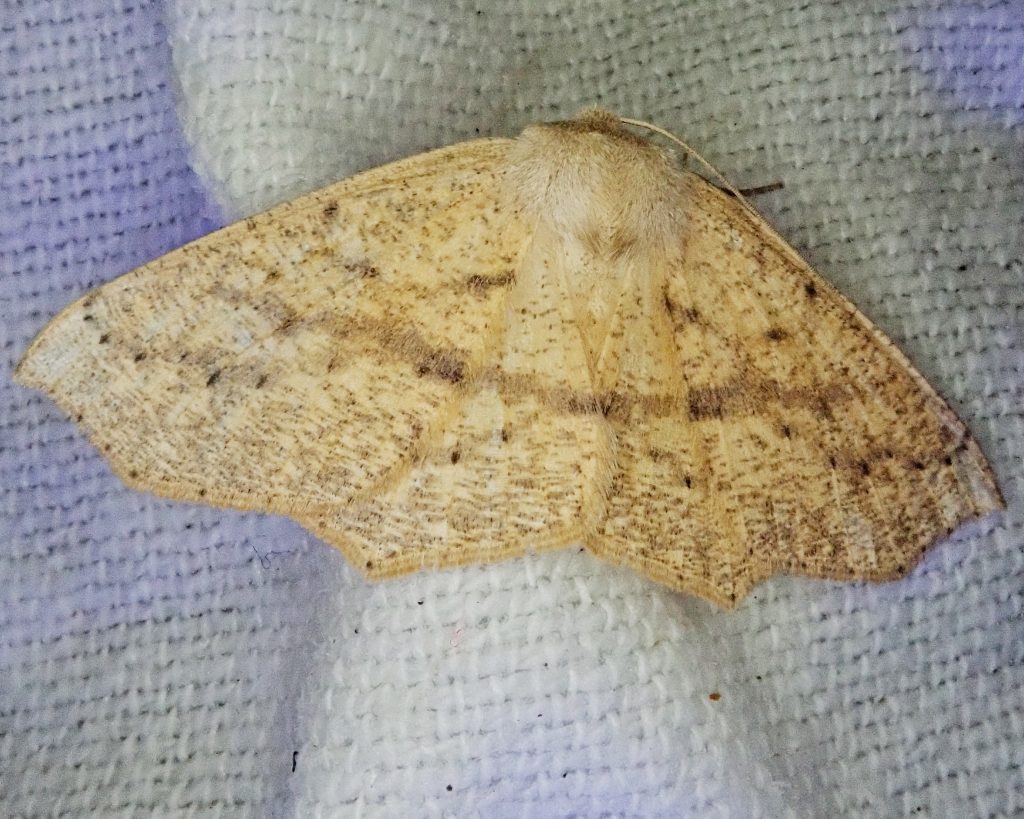
Similar species-There are no similar Sabulodes in our region, but it could be confused with some Tetracis, a genus to which it used to be assigned; Tetracis have a more strongly hooked wingtip, the forewing margin is more pointed, they have a conspicuous, albeit small discal spot, and the medial and postmedial lines don’t meet.
Habitat-Moist to mesic mixed forests and woodlands
Range-Western North America; primarily west of the Cascades in our region
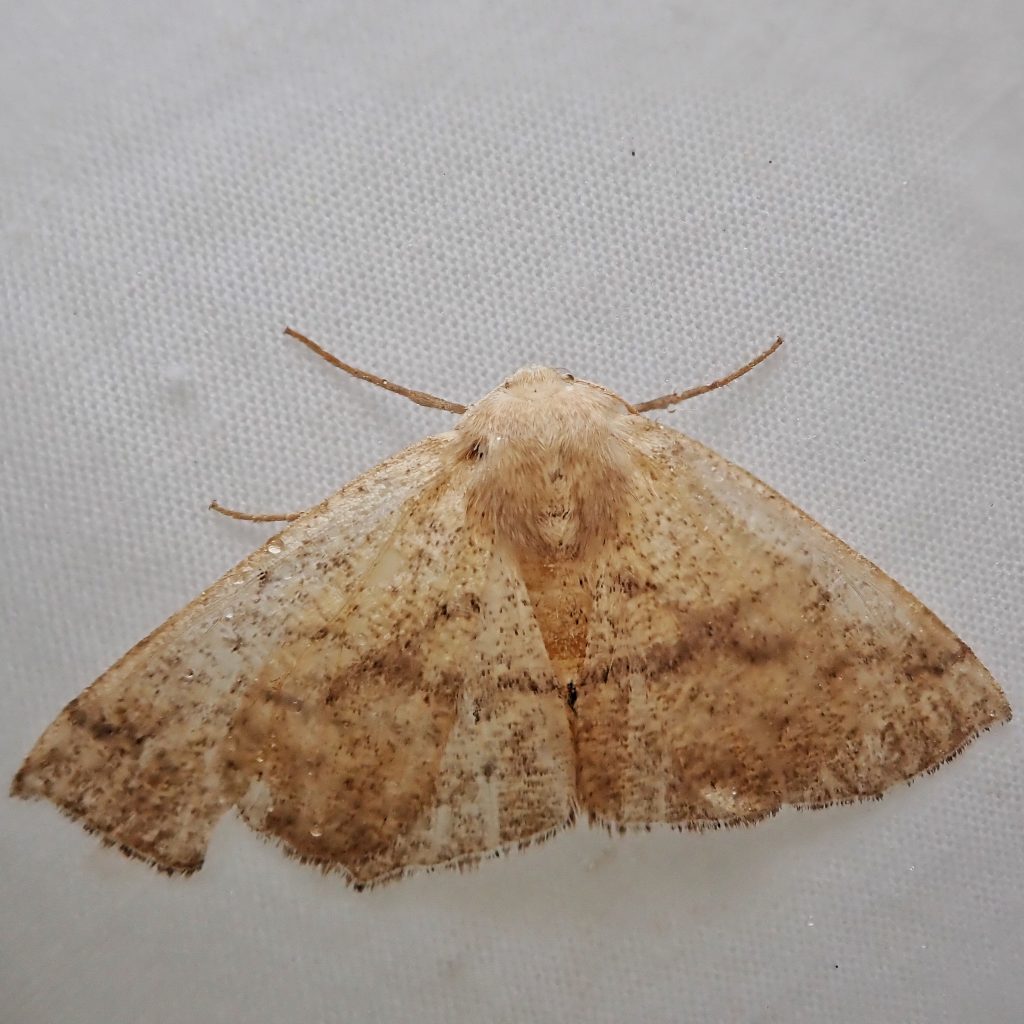
Eats-Larvae are generalists and have been found feeding on members of 27 different families of deciduous plants, including many orchard species, and English ivy; are not known to depredate conifers.
Eaten by– Probably anything insectivorous; Trichogamma platneri wasps parasitize their eggs, and Telenomus hugi wasps parasitize the larvae.
Reproduction-The number of broods per year is undetermined, but it seems likely they are at least bivoltine, since adults are found year around; eggs are laid in clusters on the leaves; larvae shelter in a silk structure built in folded leaves or between leaves.
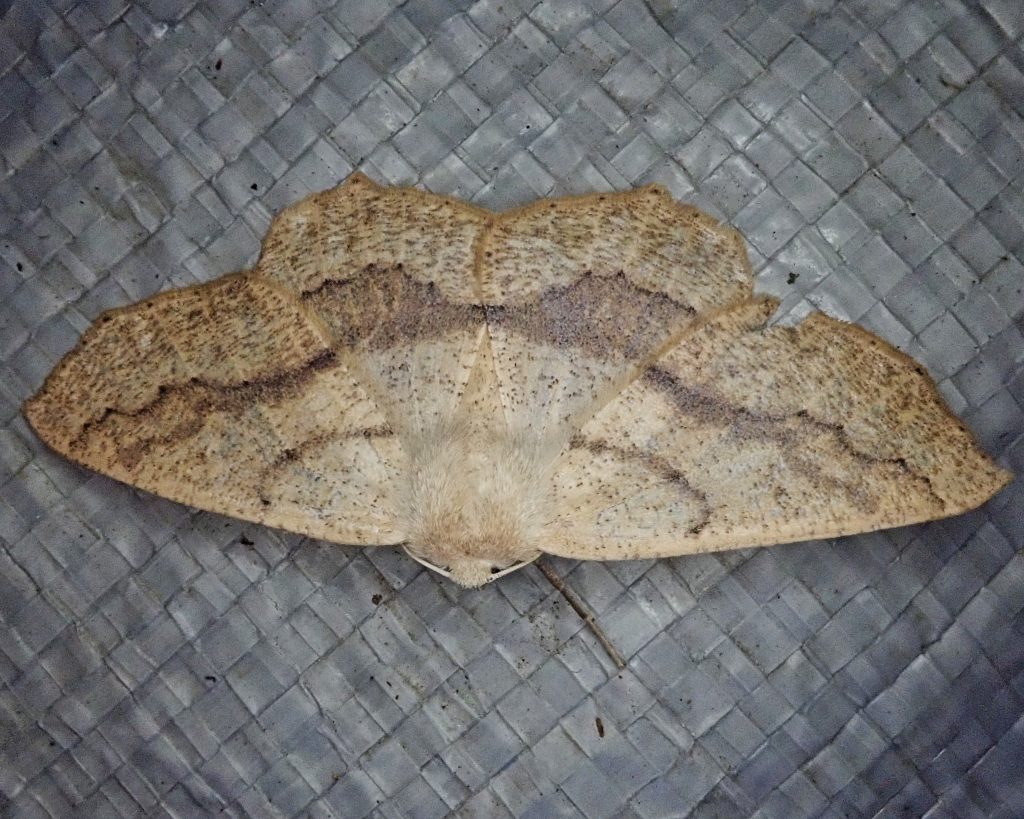
Adults active-They have been found during every month of the year. Most common from April through October
Etymology of names–Sabulodes is Latin for ‘like sand’, and either refers to the color and speckling of many moths in the genus, or to the sandy locations where they may have first been found. The specific epithet aegrotata is from the Latin for ‘weak, diseased’ and may refer to the color of the hindwing splotch as looking like a fever flush. Unfortunately I cannot find Guenee’s original description of either genus or species, although there is no guarantee that he deigned to explain his reasoning.
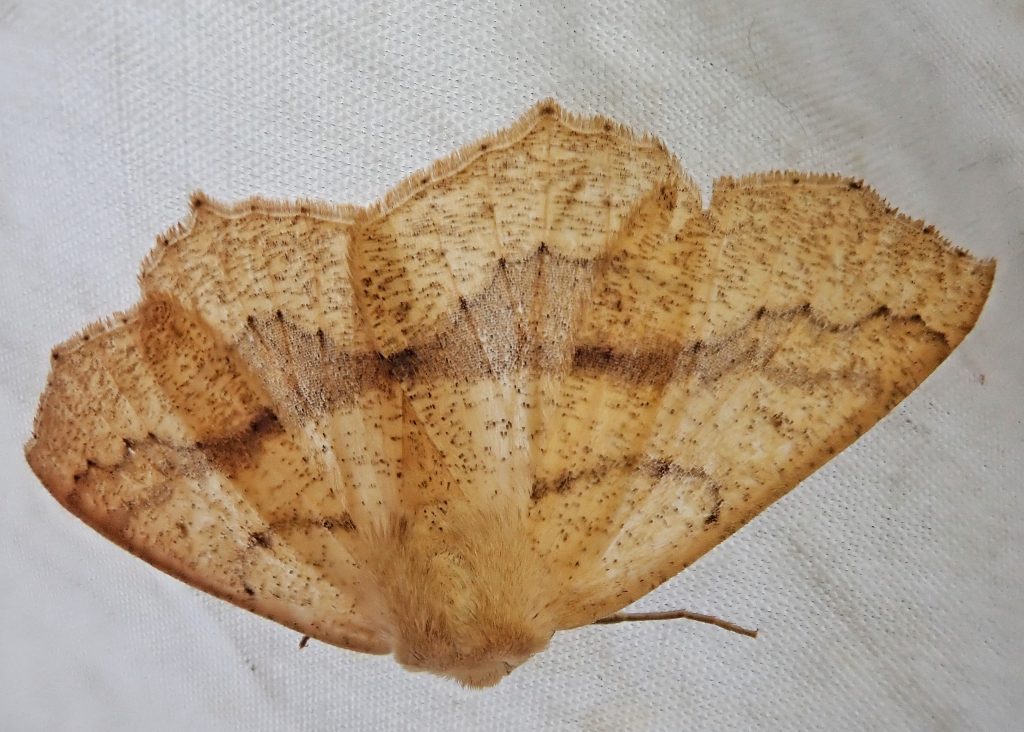
https://bugguide.net/node/view/83879
http://mothphotographersgroup.msstate.edu/species.php?hodges=6995
https://www.gbif.org/species/1954930
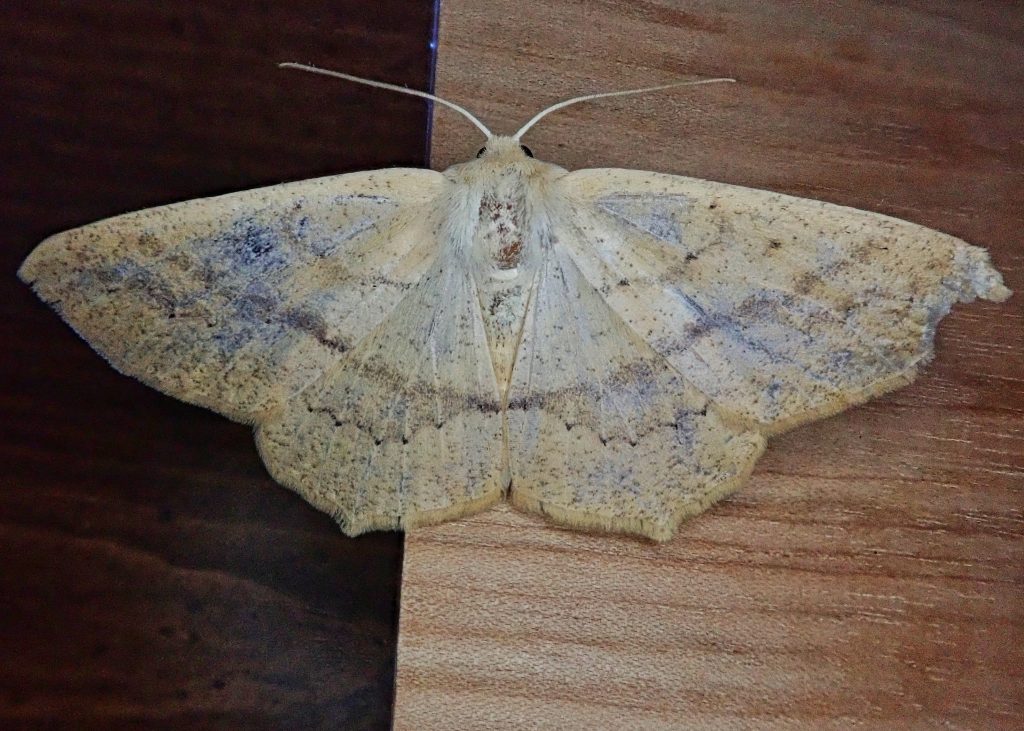
I recorded this species in photos constantly since 2018 in the Victoria, B.C. area. In 2018, I was told by my dear respected entomoogist friend Libby Avis that it was not currently on the list of BC species.
So they seem to be very common here now.
Things are constantly changing! Thanks for telling me this.
By the way, I love your blog and appreciate all the information you provide!
Thanks!
Keep up the good work!
Jochen
Thank you for the appreciation!
I especially appreciate the multiple views!
Thanks! But I really wish I had documented more of the variation I’ve seen.